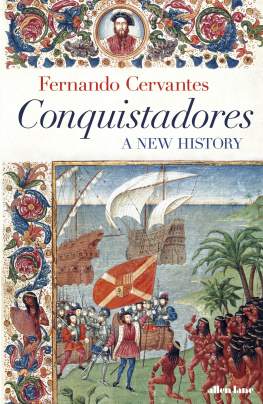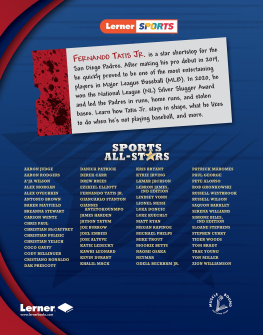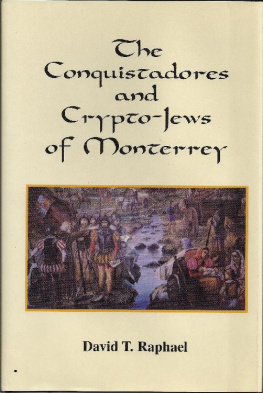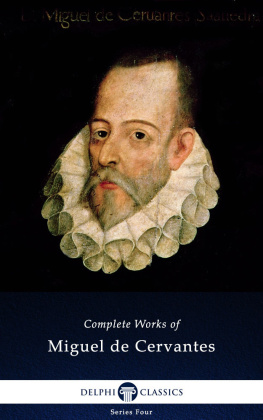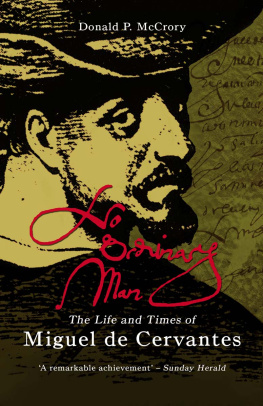Fernando Cervantes - Conquistadores: A New History
Here you can read online Fernando Cervantes - Conquistadores: A New History full text of the book (entire story) in english for free. Download pdf and epub, get meaning, cover and reviews about this ebook. year: 2019, publisher: 2020, genre: Science fiction. Description of the work, (preface) as well as reviews are available. Best literature library LitArk.com created for fans of good reading and offers a wide selection of genres:
Romance novel
Science fiction
Adventure
Detective
Science
History
Home and family
Prose
Art
Politics
Computer
Non-fiction
Religion
Business
Children
Humor
Choose a favorite category and find really read worthwhile books. Enjoy immersion in the world of imagination, feel the emotions of the characters or learn something new for yourself, make an fascinating discovery.
- Book:Conquistadores: A New History
- Author:
- Publisher:2020
- Genre:
- Year:2019
- Rating:3 / 5
- Favourites:Add to favourites
- Your mark:
- 60
- 1
- 2
- 3
- 4
- 5
Conquistadores: A New History: summary, description and annotation
We offer to read an annotation, description, summary or preface (depends on what the author of the book "Conquistadores: A New History" wrote himself). If you haven't found the necessary information about the book — write in the comments, we will try to find it.
Conquistadores: A New History — read online for free the complete book (whole text) full work
Below is the text of the book, divided by pages. System saving the place of the last page read, allows you to conveniently read the book "Conquistadores: A New History" online for free, without having to search again every time where you left off. Put a bookmark, and you can go to the page where you finished reading at any time.
Font size:
Interval:
Bookmark:

PENGUIN BOOKS
UK | USA | Canada | Ireland | Australia
New Zealand | India | South Africa
Penguin Books is part of the Penguin Random House group of companies whose addresses can be found at global.penguinrandomhouse.com.

First published by Allen Lane in 2020
Copyright Fernando Cervantes, 2020
The moral right of the author has been asserted
Cover artwork: Hernando Cortes landing in Mexico in 1519 British Library Board
All Rights Reserved / Bridgeman Image
Cover design by Richard Green
ISBN: 978-0-241-24215-5
This ebook is copyright material and must not be copied, reproduced, transferred, distributed, leased, licensed or publicly performed or used in any way except as specifically permitted in writing by the publishers, as allowed under the terms and conditions under which it was purchased or as strictly permitted by applicable copyright law. Any unauthorized distribution or use of this text may be a direct infringement of the authors and publishers rights and those responsible may be liable in law accordingly.
To Brendan and Annabel
Early Modern Spain
Columbuss Four Voyages
Hispaniola
Darin
Fernandina (Cuba)
Cortss Journey from Cuba, 1519
Cortss March to Tenochtitlan, 1519
Cortss Escape Route After the Noche Triste
Tenochtitlan and the Lacustrine Cities
Mendicant Foundations in Central Mexico by the Middle of the 16th Century
The Route of Cabeza de Vaca
Alvarados Invasion of Guatemala
Montejo in Yucatan
Inca Expansion
Pizarros Route from Panama to Cusco, 15313
Cusco at the Time of Pizarros Invasion
Quito and Tumipampa
Manqo Inka
The Hernando de Soto Expedition, 153943
The Expeditions of Jimnez de Quesada, Federmann and Benalczar
Photographic credits are shown in italics.
Monastery of St Mary of the Victory in Batalha, Portugal. Alamy.
Genoa, illustration from Sebastian Mnster, Cosmographia, 1552. Albion Prints.
Coat of arms of Christopher Columbus, 1498. Archive of the Indies of Seville. Juan Garcia/Dreamstime.
Mapamundi, 1507, by Martin Waldseemller. Library of Congress, Prints and Photographs Division, Washington, D.C.
The University of Alcal de Henares, Spain. Wikimedia Commons/Superchilum CC BY-SA 3.0.
Charles V, c.1515, Flemish School. Fitzwilliam Museum, Cambridge. Bridgeman Images.
Device and motto of Charles V on the reverse of a coin minted in Mexico, 154256. Numisbids/Daniel Frank Sedwick LLC
Portrait of a Man (Alfonso de Valds), c.1531, by an associate of Jan Cornelisz Vermeyen. National Gallery, London.
The Nuremberg Map of Tenochtitlan, from Praeclara Ferdindi Cortesii de Noua maris Oceani Hyspania narratio [], 1524. Newberry Library, Chicago, IL (Ayer 655.51.C8 1524d).
Stone disc depicting a dismembered Coyolxauhqui, c.1473, Aztec. Museo Del Templo Mayor, Mexico City. Getty Images.
Quecholli, from Juan de Tovar, Historia de la benida de los yndios apoblar a Mexico [], c.1585. John Carter Brown Library, Brown University, Providence, R.I. (Codex Ind 2, folio 154 r).
Panquetzaliztli (ibid). John Carter Brown Library, Brown University, Providence, R.I. (Codex Ind 2, folio 154 v).
Tititl (ibid). John Carter Brown Library, Brown University, Providence, R.I. (Codex Ind 2, folio 155 v).
Tlacaxipehualiztli (ibid). John Carter Brown Library, Brown University, Providence, R.I. (Codex Ind 2, folio 147 r).
Tonatiuh, depicted in the Codex Borgia, late Post-Classic period, Aztec. Reproduced by permission of Biblioteca Apostolica Vaticana, with all rights reserved (Borg.mess.1, page 19).
The Ahuehuetl of the Noche Triste, 19th century, by Jos Mara Velasco. Private Collection. Alamy.
Tzitzimtl, depicted in the Codex Magliabechiano, mid-16th century, Aztec. Biblioteca Nazionale Centrale, Florence (CL. XIII. 3 (B. R. 232) fol 76r).
Calmecac, depicted in the Codex Mendoza, 15411650. Bodleian Libraries, University of Oxford (MS. Arch. Selden. A. 1, fol. 61r).
Telpochcalli (ibid.) Bodleian Libraries, University of Oxford (MS. Arch. Selden. A. 1, fol. 63r).
Charles V, 1548, by Titian. Prado, Madrid. Getty Images.
Nezahualpilli, depicted in the Codex Ixtlilxochitl, Mexican, late 16th century. Bibliothque nationale de France, Paris (Ms. Mex. 6571, fol. 106r).
Hernn Corts, illustration from Christoph Weiditz, Trachtenbuch, 1529. Germanisches Nationalmuseum, Nuremberg. Alamy.
Friar Bartolom de las Casas, 16th century, by an anonymous artist. Biblioteca Colombina, Seville. Bridgeman Images.
Monte Albn, Oaxaca, Mexico. Ben Pipe Photography.
Detail from the Lienzo de Quauhquechollan, c.153040, Nahua school. Museo Regional Casa de Alfeique, Puebla, Mexico. Universidad Francisco Marroqun/Geosistemas y Tecnologa Avanzada, S.A.
Mask, turquoise mosaic on wood, 14001521, Mixtec. Trustees of the British Museum, London (Am,St.400).
The Mass of St Gregory, feather mosaic, 1539, School of San Jos de los Naturales. Muse des Amriques, Auch.
Carving of an angel, 16th century, Mixtec. Convent of SS Peter and Paul, Teposcolula, Mexico. Alamy.
Hernn Corts greets Friar Martn de Valencia, mural, mid-16th century. Parish of the Immaculation Conception, Ozumba, Mexico. Wikimedia Commons/Alejandro Linares Garcia CC BY-SA 4.0.
Bridge of the Apurimac, illustration from Ephraim George Squier, Peru; incidents of travel and exploration in the land of the Incas, 1877.
The Inca Road near Cuzco, Peru. Shutterstock.
Double ceremonial vessel, ceramic, 15th or early 16th century, Inca. The Metropolitan Museum of Art, New York. The Michael C. Rockefeller Memorial Collection, Bequest of Nelson A. Rockefeller, 1979 (Acc. No. 1979.206.1149).
Male figurine, gold-silver alloy, 14001533, Inca. The Metropolitan Museum of Art, New York. Gift and Bequest of Alice K. Bache, 1974, 1977 (Acc. No. 1974.271.7)
Juan de Pareja, c.1650, by Diego Velzquez. The Metropolitan Museum of Art, New York. Purchase, Fletcher and Rogers Funds, and Bequest of Miss Adelaide Milton de Groot (18761967), by exchange, supplemented by gifts from friends of the Museum, 1971 (Acc. No. 1971.86).
You are no city: You are a universe. These are the words with which the Renaissance poet Fernando de Herrera addressed his native Seville in the middle of the sixteenth century. With brilliant brevity, they evoke a change of unprecedented proportions: in a mere few decades this Andalusian city on the fringes of Europe had been transformed into the de facto capital of the greatest empire the world had yet seen. Under the rule of the Habsburg Charles V, it spanned medieval Christendom and, stretching across the Atlantic, the New World of the Americas. The story that underpins Sevilles dramatic rise is very familiar to us. In 1492 an eccentric Genoese sailor named Christopher Columbus, hoping to sail to India across the Atlantic, stumbled across some islands in the Caribbean. A flurry of expeditions followed, culminating in the astonishing conquests of two formidable civilizations: the Aztecs of Mexico, conquered by Hernn Corts in 1521, and the Incas of Peru, conquered by Francisco Pizarro just over a decade later. Both men styled themselves conquistadores, subduing, killing and establishing their dominion in the name of the Habsburg emperor and of God himself.
Font size:
Interval:
Bookmark:
Similar books «Conquistadores: A New History»
Look at similar books to Conquistadores: A New History. We have selected literature similar in name and meaning in the hope of providing readers with more options to find new, interesting, not yet read works.
Discussion, reviews of the book Conquistadores: A New History and just readers' own opinions. Leave your comments, write what you think about the work, its meaning or the main characters. Specify what exactly you liked and what you didn't like, and why you think so.

